Potrebujeme váš súhlas na využitie jednotlivých dát, aby sa vám okrem iného mohli ukazovať informácie týkajúce sa vašich záujmov. Súhlas udelíte kliknutím na tlačidlo „OK“.
ASTM C1316-08
Standard Test Method for Nondestructive Assay of Nuclear Material in Scrap and Waste by Passive-Active Neutron Counting Using 252Cf Shuffler
Automaticky preložený názov:
Štandardná skúšobná metóda pre nedeštruktívne testu jadrového materiálu, šrotu a odpadu zo strany pasívny aktívny Neutron počítanie Použitie 252Cf namiešanej
NORMA vydaná dňa 1.6.2008
Informácie o norme:
Označenie normy: ASTM C1316-08
Poznámka: NEPLATNÁ
Dátum vydania normy: 1.6.2008
Kód tovaru: NS-10653
Počet strán: 17
Približná hmotnosť: 51 g (0.11 libier)
Krajina: Americká technická norma
Kategória: Technické normy ASTM
Kategórie - podobné normy:
Anotácia textu normy ASTM C1316-08 :
Keywords:
active neutron measurements, californium, californium-252, NDA, neutron coincidence counting, PAN, passive neutron measurements, plutonium, scrap measurements, shuffler, uranium, waste measurements, Nondestructive evaluation (NDE)--nuclear applications, Nuclear scrap and waste 0materials, Passive-active neutron counting, Plutonium, Shuffler technique, Uranium, Active neutron 0(shuffler) mode, Calibration--nuclear analysis instrumentation, Californium (Cf), Coincidence counting
Doplňujúce informácie
| Significance and Use | ||||||||||||||||||||||||||
|
This test method is used to determine the U and Pu content of scrap and waste in containers. Active measurement times have typically been 100 to 1000 s. Passive measurement times have typically been 400 s to several hours. The following limits may be further restricted depending upon specific matrix, calibration material, criticality safety, or counting equipment considerations. The passive measurement has been applied to benign matrices in 208 L drums with Pu content ranging from 30 mg to 1 kg. The active measurement has been applied to waste drums with 235U content ranging from about 100 mg to 1 kg. This test method can be used to demonstrate compliance with the radioactivity levels specified in safeguards, waste, disposal, and environmental regulations (for example, see NRC regulatory guides 5.11, 5.53, DOE Order 5820.2a, and 10CFR61 sections 61.55 and sections 61.56, 40CFR191, and DOE/WIPP-069). This test method could be used to detect diversion attempts that use shielding to encapsulate nuclear material. The bias of the measurement results is related to the item size and density, the homogeneity and composition of the matrix, and the quantity and distribution of the nuclear material. The precision of the measurement results is related to the quantity of nuclear material and the count time of the measurement. For both the matrix-specific and the matrix-correction approaches, the method assumes the calibration materials match the items to be measured with respect to the homogeneity and composition of the matrix, the neutron moderator and absorber content, and the quantity of nuclear material, to the extent they affect the measurement. It is recommended that measurements be made on small containers of scrap and waste before they are combined in large containers. Special arrangement may be required to assay small containers to best effect in a large cavity general purpose shuffer. It is recommended that measurements be made on containers with homogeneous contents. In general, heterogeneity in the distribution of nuclear material, neutron moderators, and neutron absorbers has the potential to cause biased results. This test method requires that the relative isotopic compositions of the contributing elements are known. This test method assumes that the distribution of the contributing isotopes is uniform throughout the container when the matrix affects neutron transport. This test method assumes that lump affects are unimportant—that is to say that large quantities of special nuclear material are not concentrated in a small portion of the container. For best results from the application of this test method, appropriate packaging of the items is required. Suitable training of the personnel who package the scrap and waste prior to measurement should be provided (for example, see ANSI 15.20, Guide C 1009, Guide C 1490, and Guide C 1068 for training guidance). Sometimes site specific conditions and requirements may have greater bearing. |
||||||||||||||||||||||||||
| 1. Scope | ||||||||||||||||||||||||||
|
1.1 This test method covers the nondestructive assay of scrap and waste items for U, Pu, or both, using a 252Cf shuffler. Shuffler measurements have been applied to a variety of matrix materials in containers of up to several 100 L. Corrections are made for the effects of matrix material. Applications of this test method include measurements for safeguards, accountability, TRU, and U waste segregation, disposal, and process control purposes (1, 2, 3). 1.1.1 This test method uses passive neutron coincidence counting (4) to measure the 240Pu-effective mass. It has been used to assay items with total Pu contents between 0.03 g and 1000 g. It could be used to measure other spontaneously fissioning isotopes such as Cm and Cf. It specifically describes the approach used with shift register electronics; however, it can be adapted to other electronics. 1.1.2 This test method uses neutron irradiation with a moveable Cf source and counting of the delayed neutrons from the induced fissions to measure the 235U equivalent fissile mass. It has been used to assay items with 235U contents between 0.1 g and 1000 g. It could be used to assay other fissile and fissionable isotopes. 1.2 This test method requires knowledge of the relative isotopic composition (See Test Method C 1030) of the special nuclear material to determine the mass of the different elements from the measurable quantities. 1.3 The values stated in SI units are to be regarded as standard. No other units of measurement are included in this standard. 1.4 The techniques described in this test method have been applied to materials other than scrap and waste. These other applications are not addressed in this test method. 1.5 This standard does not purport to address all of the safety concerns, if any, associated with its use. It is the responsibility of the user of this standard to establish appropriate safety and health practices and determine the applicability of regulatory limitations prior to use. Specific precautionary statements are given in Section 8. |
||||||||||||||||||||||||||
| 2. Referenced Documents | ||||||||||||||||||||||||||
|
Podobné normy:
Historická
1.5.2013
Historická
1.1.2008
Historická
1.2.2007
Historická
15.1.2014
Historická
1.1.2014
Historická
1.10.2010
Odporúčame:
EviZak - všetky zákony vrátane ich evidencie na jednom mieste
Poskytovanie aktuálnych informácií o legislatívnych predpisoch vyhlásených v Zbierke zákonov od roku 1945.
Aktualizácia 2x v mesiaci !
Chcete vedieť viac informácii ? Pozrite sa na túto stránku.


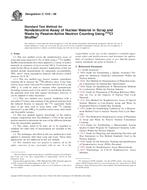
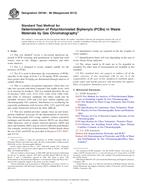 ASTM D6160-98(2013)..
ASTM D6160-98(2013)..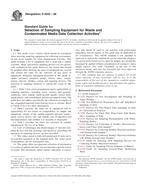 ASTM D6232-08
ASTM D6232-08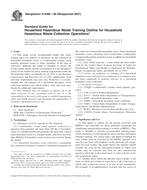 ASTM D6498-99(2007)..
ASTM D6498-99(2007)..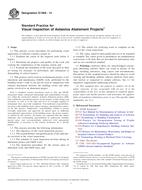 ASTM E1368-14
ASTM E1368-14 ASTM E1689-95(2014)..
ASTM E1689-95(2014)..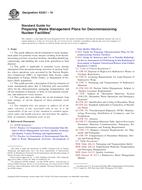 ASTM E2421-10
ASTM E2421-10
 Cookies
Cookies
